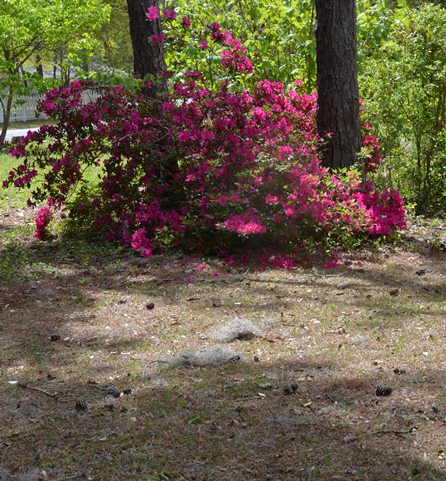
Spring is officially here, so this means it is time to get the lawn in shape for another growing season in north Florida. The first step is to develop an action plan which sets the path to achieving turf success.
A good starting point is mowing the lawn to get any leaves removed and trim any weeds which have emerged. Empty the bagged clipping in a compost pile for later use.
Shaded areas under trees must be treated differently since grass will not grow in those areas. Just leave the natural tree leaf mulch there and add additional mulch as needed.
If there are marginally shaded areas where turf is preferred, spring is a good time to plant some grass plugs. All southern turf grasses prefer full sun, but a few St. Augustine cultivars such as ‘Seville’, ‘Delmar’, and ‘Captiva’ will tolerate some shade.
Trying some plugs of ‘Seville’ St. Augustine is a low-cost way of determining if there is enough sunlight to grow grass. The plugs are available at local garden centers.
If the plugs don’t take hold and spread, then there is not enough sunlight. Use groundcovers, mulches, or other plantings in these shaded areas.
Before mowing, use a ruler to set the cutting level. Try to never remove more than one-third the length of the grass blade at any one mowing.
Sharpen the mower blades after every four to eight hours of mowing so a ragged cut is avoided. Maintain St. Augustine grass at about three inches tall and centipede at about one and one-half inches.
Most of the weeds currently in panhandle Florida lawns are winter annuals. They are flowering and will soon go to seed, then die as the weather gets hotter.
It is difficult to kill these winter annuals at this mature stage, so applying herbicide now is pointless. The best option is to keep the weeds mown so they do not produce as many seed and reemerge next year. Also, apply a pre-emergent herbicide in October 2014 to minimize 2015’s spring weeds.
Now is the time to put out a pre-emergent herbicide for some of the summer weeds, particularly chamberbitter.
Unless a soil test indicates a need for phosphorus, the best fertilizers to use on lawns will be missing this nutrient. The commonly available 15-0-15 fertilizers should also have half of the nitrogen (7.5%) in a slow-release form.
Many local retailers have these 15-0-15 fertilizers with and without herbicide. Generally speaking apply the 15-0-15 fertilizer without herbicide. Below is a table of recommended fertilizer application rates based on typical lawn square footage.
If the soil is too compacted, too wet, too dry, or has nematodes, certain weeds may grow better in those conditions than does your lawn grass. Take the time to identify why the grass is not growing well.
Rain has provided enough water so far this spring, but this could change at any moment. However, do not water unless it is needed.
Only water when about thirty percent of the lawn wilts, turning dull grayish color as the leaf blades roll inward. At that time water deeply, applying about one-half inch of water as measured in cans placed in the sprinkler pattern.
To learn more about proper turf care in north Florida contact your local UF/IFAS County Extension Office.
 0
0
